Intro Statement:
Visually, spaces are perceived with transparency when they have overlays, extensions and their boundaries blur at certain points. These observations are found throughout various works and they concentrate on visual perceptions of space. One of these concepts illustrated by Eve Blau includes abstracted spaces that create an image similar to cubist paintings where the user is constantly viewing spaces that intertwine and relate. The relationships are formed from the basic roots in tectonic style that controls how one sees a room such as heavy or light, shallow or deep. These different methods of overlaying and showing ambiguity abstractly within spaces merges and shifts programs to alter our ideas on how these spaces are associated. These perceptions not only include overlays but a sense of the beyond and the shortening and the extending of a space. Ambiguities within spaces that make associations between two or more areas are referenced to explain the phenomenal perceptions of a larger layout. The occupant’s assessments and perceptions about a space is directly associated with spatial relations, ambiguities, tectonics, and perceived barriers. These aspects all inform and contribute to the ideas behind the perception of phenomenology.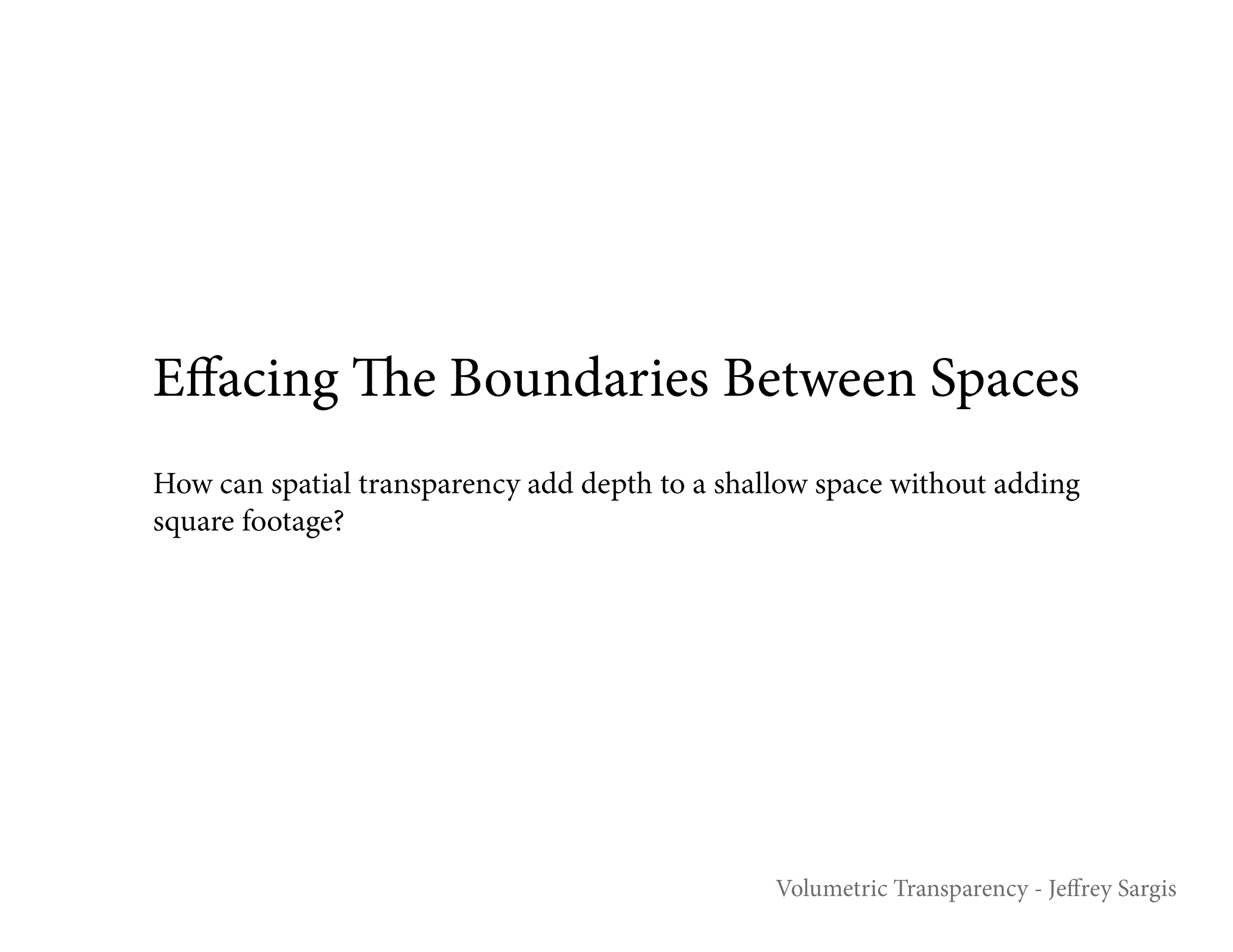
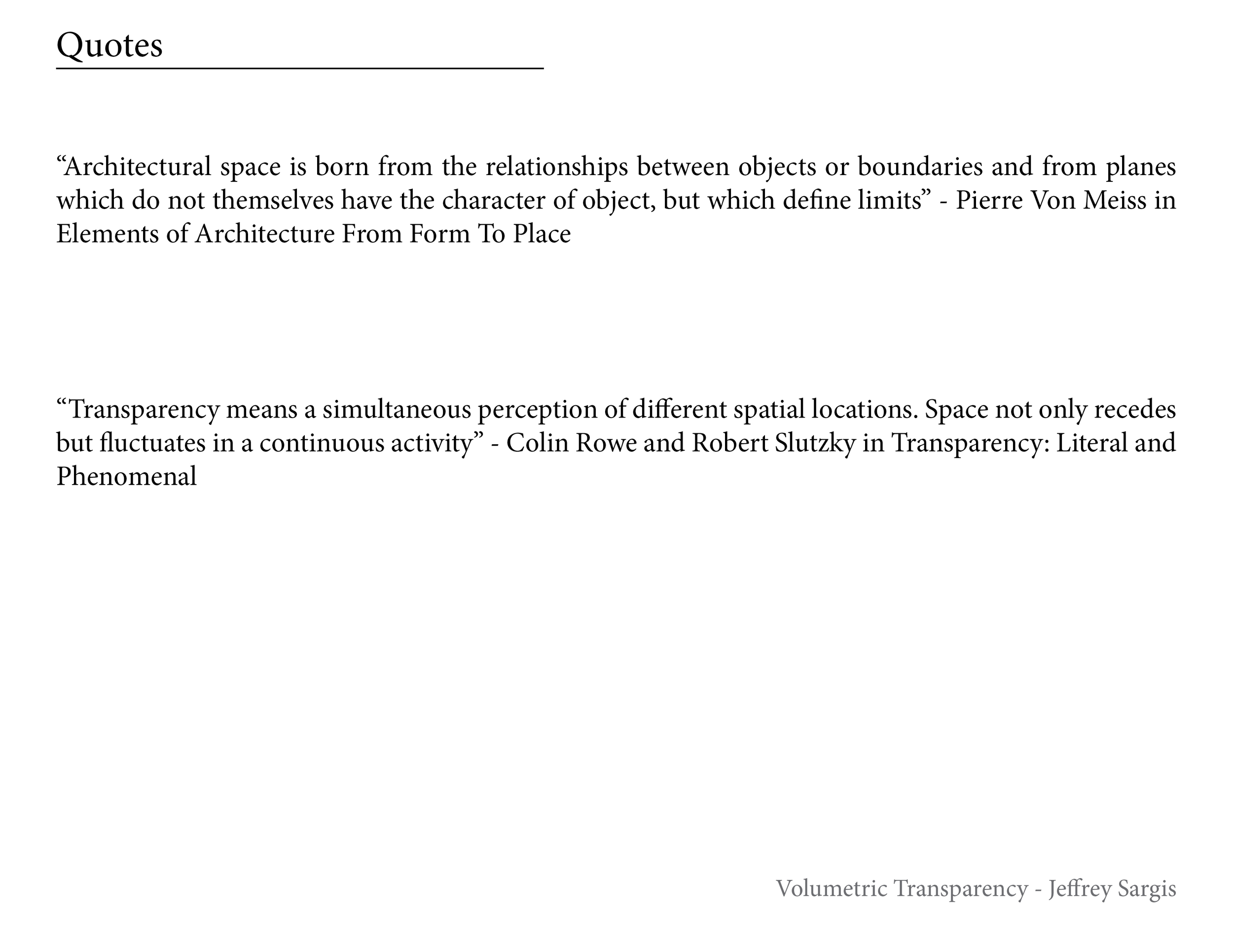
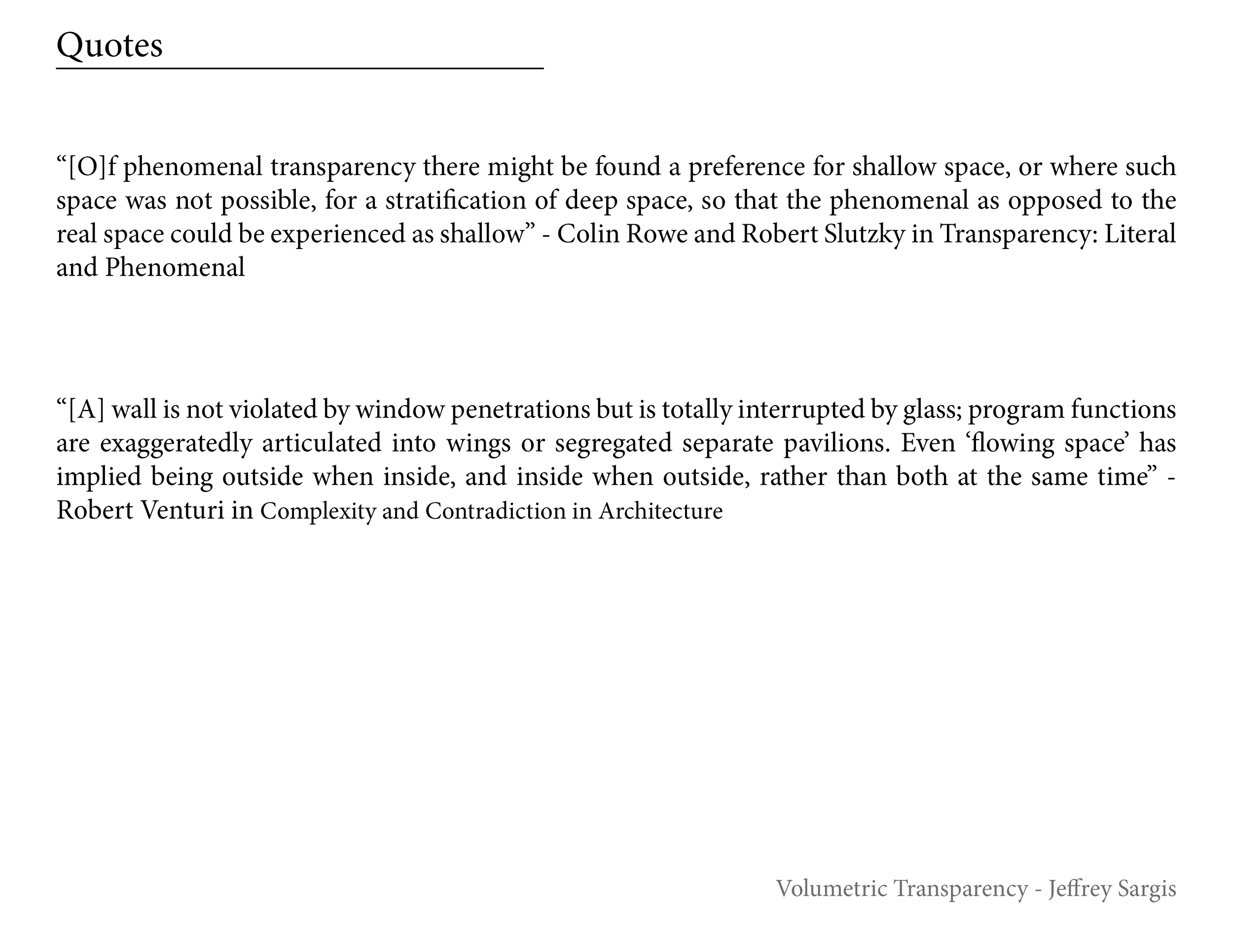
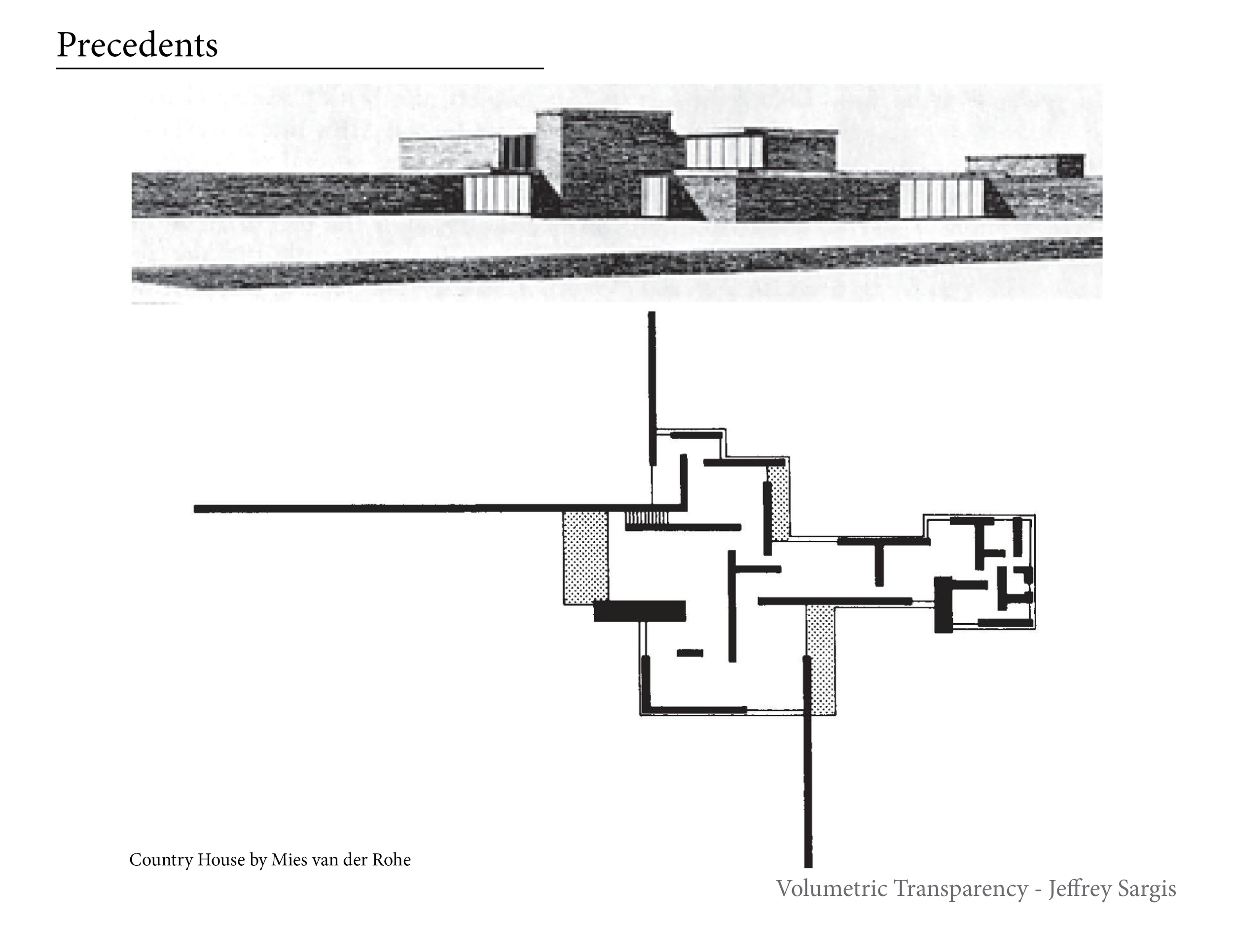
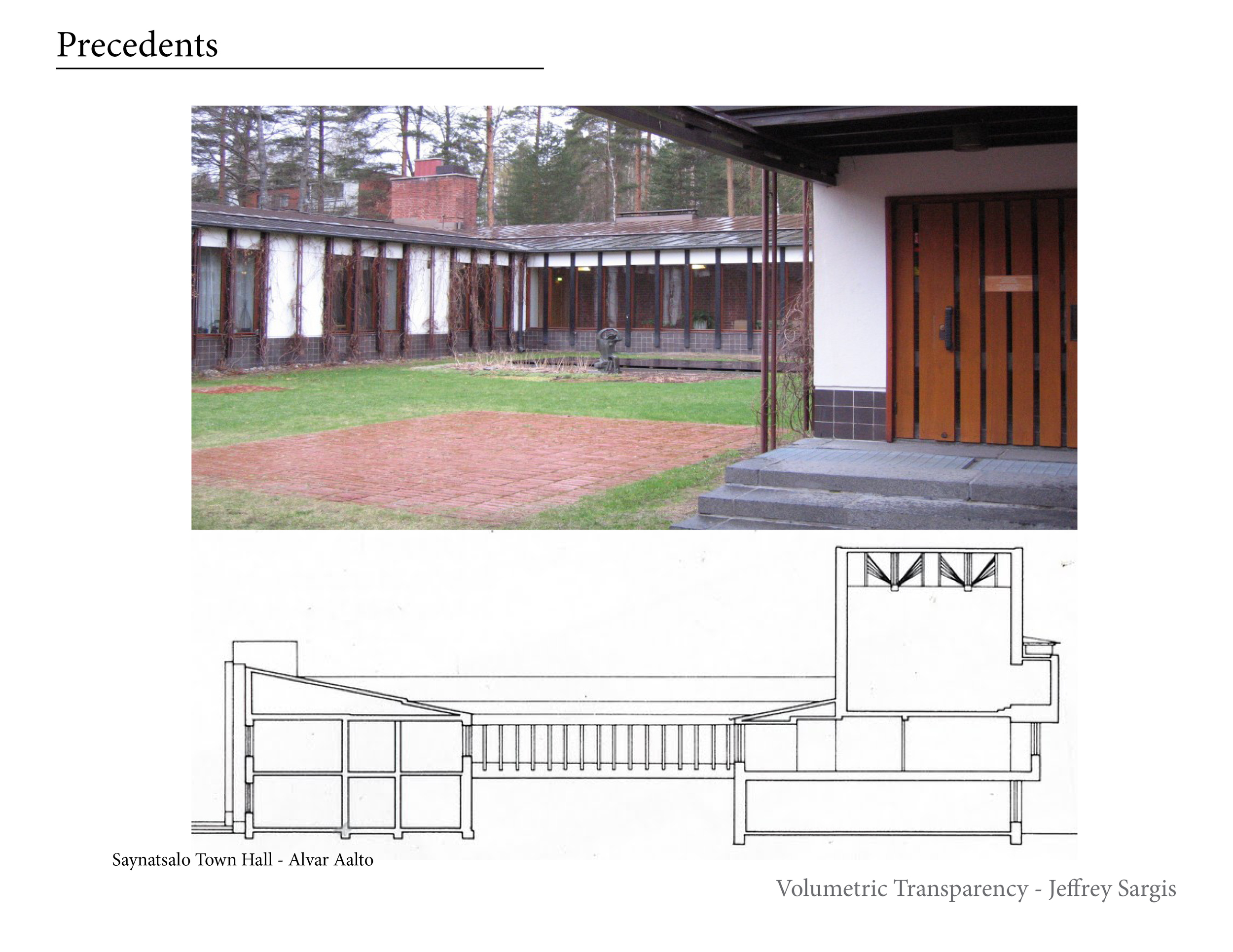


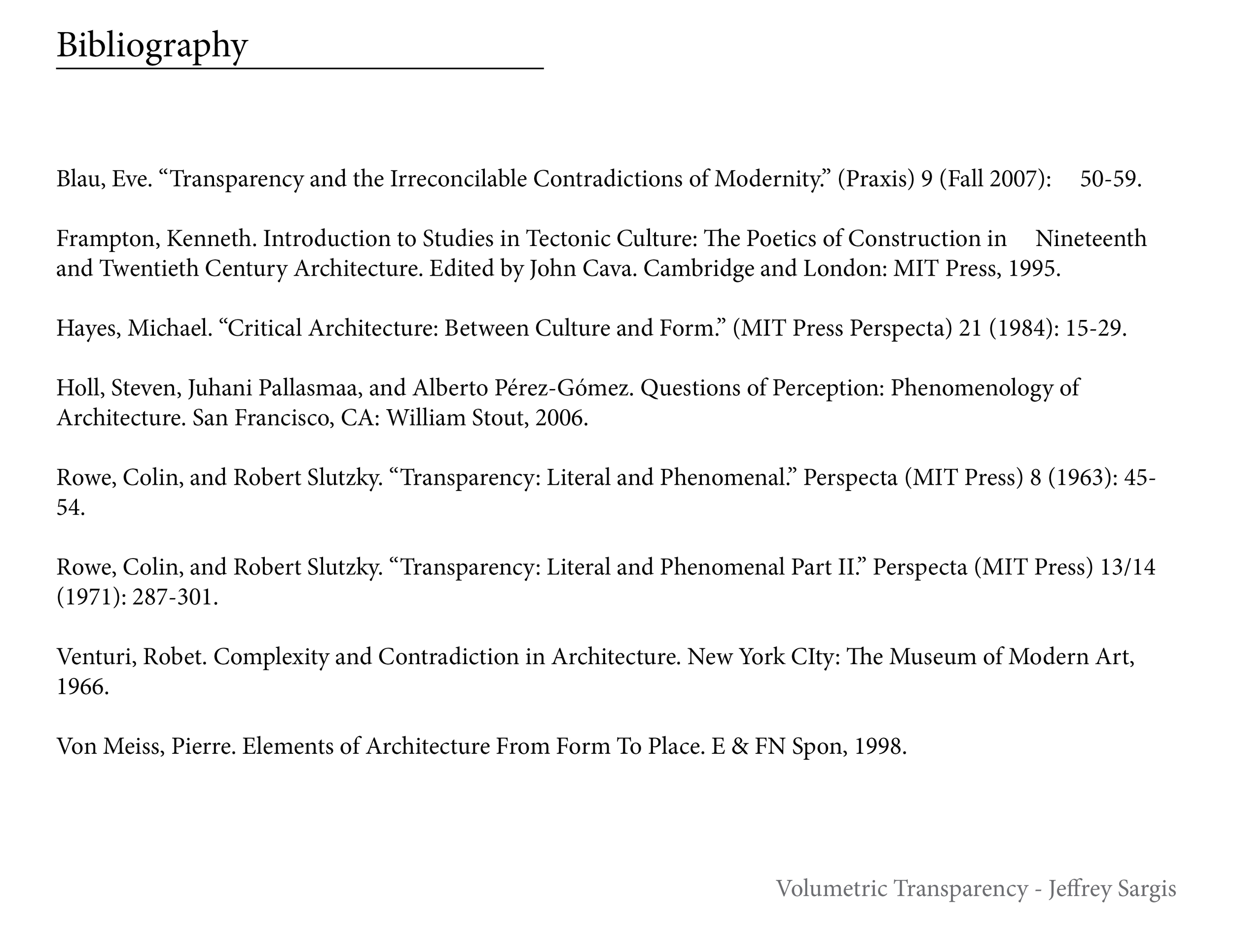
TP1: Assignment B: Contemporary Discourses / Compare and Contrast Essay 2
Reflection
The two readings chosen for this assignment inform my thinking about my thesis question by helping me to discover how I wish to research and support my thesis topic. What I wish to learn from my thesis question is about the continuity of interior and exterior spaces. Frampton’s article reveals the uses and general theories on tectonics, which I can apply to my thesis developing the use of a building’s material language to denote interior and exterior spaces. Blau’s article teaches how transparency, both literal and visual, can cause the occupant to feel as if the adjacent spaces are connected. This understanding provides a tool to aid my research in creating continuity between interior and exterior spaces.
Each of the sources “Introduction to Studies in Tectonic Culture” by Kenneth Frampton and “Transparency and the Irreconcilable Contradictions of Modernity” by Eve Blau, recognizes a poetic non-visual non-literal aspect to tectonics. However, Frampton focuses more on the “traditional” phenomenology of tectonics, while Blau speaks on the abstract perception of spaces. Frampton proves his theory by citing examples throughout history of how materials define space and engage the inhabitant. Blau’s views are similar, however, she focuses on how the ambiguity of transparency can alter an individual’s perception of space. The user’s perception of the space’s program is constantly in motion, much like a film montage of the building’s daily programmatic lifespan. The sources both speak to how tectonics are used to create literal and phenomenological space but they differ in their abstraction of it.
In Frampton’s “Studies in Tectonic Culture” he asserts that we view space by reorganizing it based on past knowledge, that our movement into space defines it, and that structure and construction can vary the space’s expression. Frampton claims that based on our past experiences we reorganize and view a space as it has been before and theoretically should be now. “The body reconstitutes the world through its tactile appropriation of reality” (Frampton 1995, 10). He goes on to argue that tectonics create a defined space that we evaluate while we move forward into its volumes. “Our concept of space is determined by the frontalized progression of the body through space in depth” (Frampton 1995, 11). Frampton believes that a building’s expression can vary and is defined by subtle changes in its structural and material relationships. “Combinations of structure and construction could become the occasion for a subtle variation in expression” (Frampton 1995, 20). His views are constrained to a more traditional view of tectonics, one where the literal guides perception.
Eve Blau’s “Transparency and The Irreconcilable Contradictions of Modernity” argues that tectonic transparency creates literal and phenomenological spaces that have a complex layering, that move between realism and abstraction. Blau also states that these layered spaces have structural systems that when both visually and literally join they become a fully integrated work. Blau asserts that the layering of juxtaposed spaces causes them to blur into one another creating a complex interpretation of which space is positioned, without favoring one over another. “A quality of spatial organization that is ambiguous, generated by the simultaneous perception of different spatial locations and superimposed forms that appear to interpenetrate without optically destroying each other” (Blau 51). She argues that the spaces move between realism and abstraction because of the context in which they are viewed in relation to the whole of the building. For example a buildings layout can be viewed as a montage of different uses. “A conception of transparency as a function of montage: a compositional strategy of de-contextualization and re-contextualization the problematized and foregrounds the dialectical relationship between realism and abstraction” (Blau 52). Blau claims that when the literal structure and visual structure intertwine the result is a form that is perfectly complete as a whole. For example, “Mies integrates his two structural systems visually so that, perceptually, the discrepancies between them become invisible and the whole seems to cohere into a perfectly balanced and fully integrated autonomous work of art” (Blau 57). Her views on perception are founded in the abstract and how clarity can be altered and questioned.
As discussed, tectonic expression is prominent in both articles but the idea differs in how its use is executed. Kenneth Frampton takes a more traditional approach on how tectonics and materiality are expressed. His views are more realistic than abstract due to the concept of how materials express the space and move the person throughout it. Eve Blau discusses using transparency to blur and restructure the spaces causing the person to constantly be reassessing their understanding of the space. Her views on perceived space and programmatic uncertainty create an abstract dynamic dialogue between the user and the designed layout. Both articles articulate the profound influence different types of tectonics have on the occupant.
Bibliography
Blau, Eve. “Transparency and the Irreconcilable Contradictions of Modernity,” PRAXIS 9 (fall 2007): 50-59
Frampton, Kenneth. “Introduction to Studies in Tectonic Culture: The Poetics of Construction in nineteenth and Twentieth Century Architecture” Edited by John Cava (Cambridge and London: MIT Press), 1-27.